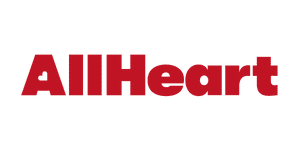Women's PPE should be created specifically for their bodies, not just sized down
According to data from the Bureau of Labor Statistics, there were about 70 million women working in the U.S. in 2020, making up 56.2% of all employees. Despite being vastly underrepresented in historically male-dominated fields, women are increasingly opting to work in these fields, a development fueled by expanding employment prospects in fields like science, technology, engineering, and mathematics.
Despite the rise in female employment in these fields, there are still far too many people who lack access to PPE made specifically for women. Trying to “make do” with PPE designed for men not only leads to decreased comfort but also jeopardizes their safety.
Proper fit is Crucial for Safety
It is unrealistic to anticipate that PPE based on male anthropometric (body measurement) data will fit women well, just as there is no such thing as universal PPE. When PPE does not fit properly, it may fail to protect the worker against the hazards for which it was designed.
For instance, when a woman wears an FR item meant for a male, the sizing and proportions are incorrect, resulting in a looser and baggier fit, which might seriously jeopardize the wearer’s safety. PPE is, after all, the final line of defense against workplace dangers.
Women encounter difficulties with work gloves and safety goggles that are frequently too large, as well as the absence of pregnancy PPE, in addition to FR garments and other protective clothing that doesn’t fit properly.
Poorly fitted PPE can hinder physical dexterity and mobility, which can affect productivity and—more importantly—poses safety issues like tripping hazards and cloth that get caught in machinery.
“I’ve never had a coverall that fit appropriately and if you don’t have something that fits, you can’t do certain tasks safely,” said Joy Jacobsen, MS, CIH, CSP, CRSP, EP, Industrial Hygienist at Amsted Rail, past chair of the American Industrial Hygiene Association Women in Industrial Hygiene Committee and chair of the AIHA Respiratory Protection Committee.
“You can unknowingly exclude people by not having proper PPE to do the work,” she added.
PPE that is Safer by Design for Women
It is becoming more and more important to provide female workers with PPE that is safer by design, and industry associations, PPE manufacturers, and large employers are doing just that.
For instance, the American Society of Safety Professionals (ASSP) held a summit on women’s workplace safety in 2018. How to close the gap in the availability of PPE made expressly for women and “educating leadership about the necessity for and availability of such equipment” were the main issues covered during the summit.
Participants in the summit came up with a list of actions items that employers and other stakeholders could take to increase the accessibility of PPE for women, including collecting information to create universal-fit guidelines, rating PPE and work equipment, publishing advice for equipment users, and taking part in an ASSP technical report that would include recommendations on choosing PPE for various populations.
The following year, to aid in educating employers and other stakeholders about this crucial topic, the International Safety Equipment Association established a partnership with ASSP and its Women in Safety Excellence Common Interest Group.
New product offering
To satisfy this urgent requirement, some PPE manufacturers have already increased the range of products they offer. Additionally, the new goods are made exclusively for women and not just scaled-down versions of men’s PPE.
What a large producer of FR clothing recently introduced to address the needs of women working in the oil and gas or petrochemical sectors is a good illustration. Their new FR shirts for women have side seams designed to allow movement without coming untucked and feature a uniquely designed chest pocket to fit a woman because she still needs secured storage. Its new FR pants, as well as a pleated FR coverall, were manufactured based on female anthropometric data to help ensure that women have a full range of motion, enabling them to move, bend and work in comfort. All of these garments are UL-certified to meet NFPA 2112.
Read the full news here.
Also read: Hohenstein invests in AI startup Sizekick













